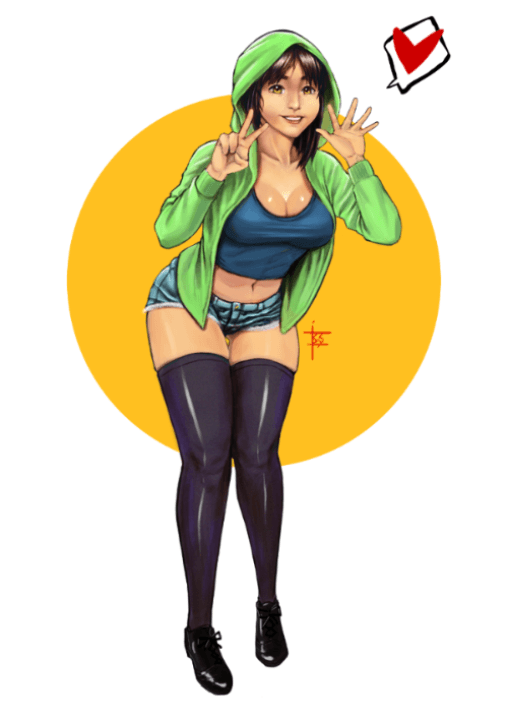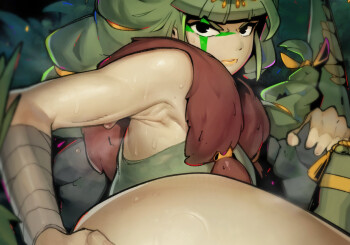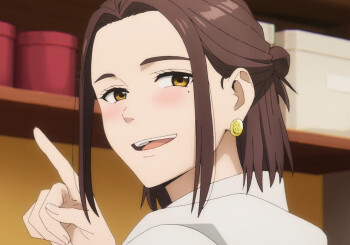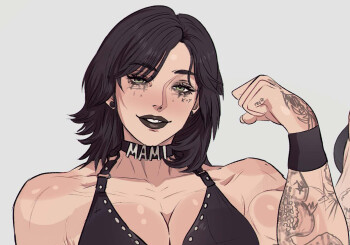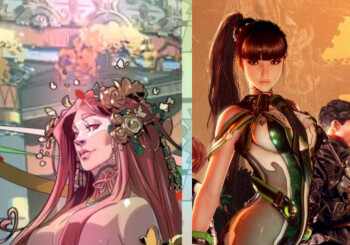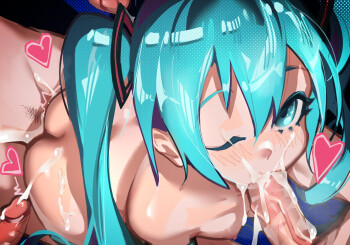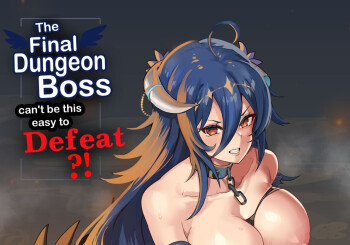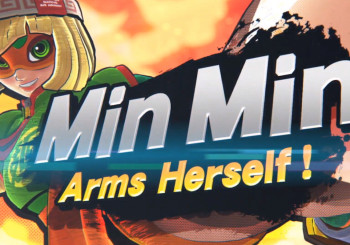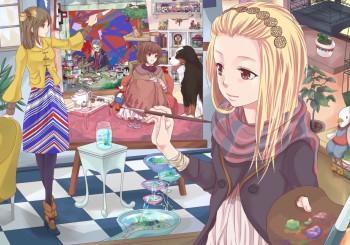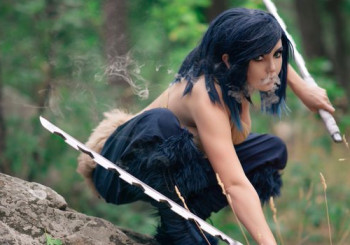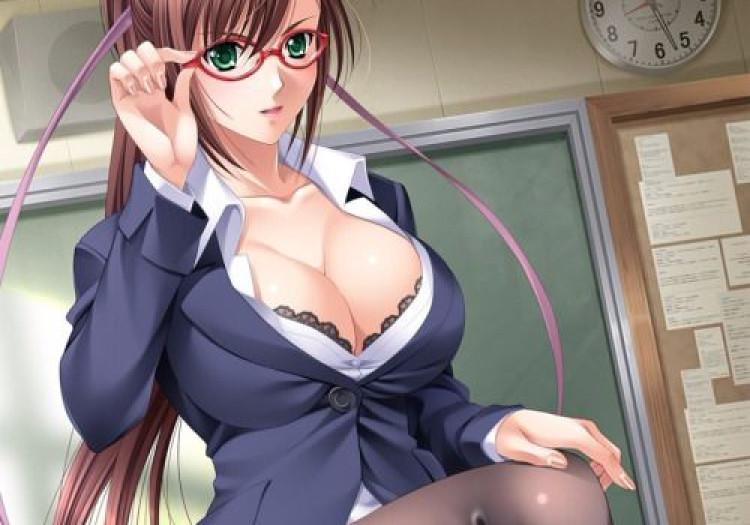
I don't know about you guys, but I have been reading doujins since I discovered the internet at the age of 16. Those "you must be 18+ to enter this site" warnings were not enough to deter me back then as I browse from one comic to the next. Through all my years browsing hentai manga, I noticed that the art improves — or rather, evolved, as time progress.
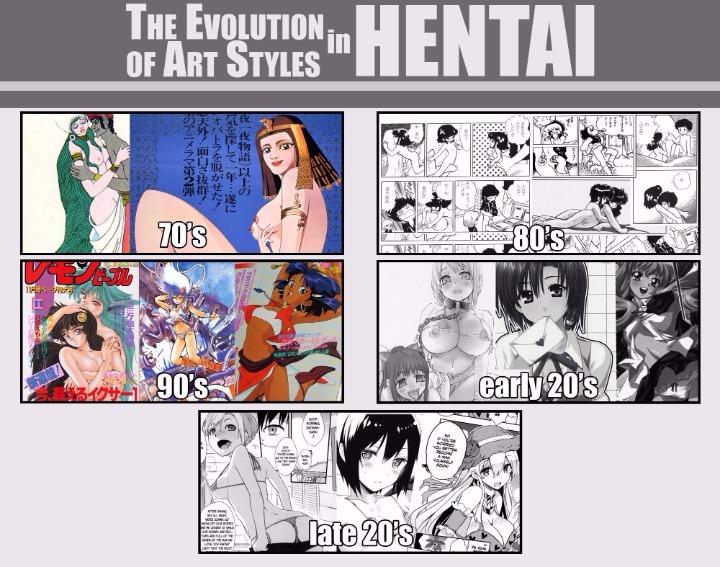
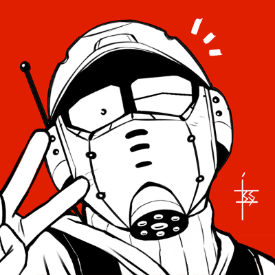
Helping me with the art is my friend from work and a "doujin" artist, Tapsykreets. I was gonna rate the images, but I was told by him that beauty and aesthetics are subjected by the trends at the time, and that what is beautiful then is considered unattractive now or vice versa.
To see how much the art in hentai had changed, we must first establish a point to begin our comparison. What better person to turn to to get our example than the "God of Manga," Osamu Tezuka. He arguably created the first hentai manga, A Thousand & One NIghts and Cleopatra, made in 1969 and 1970 perspectively.
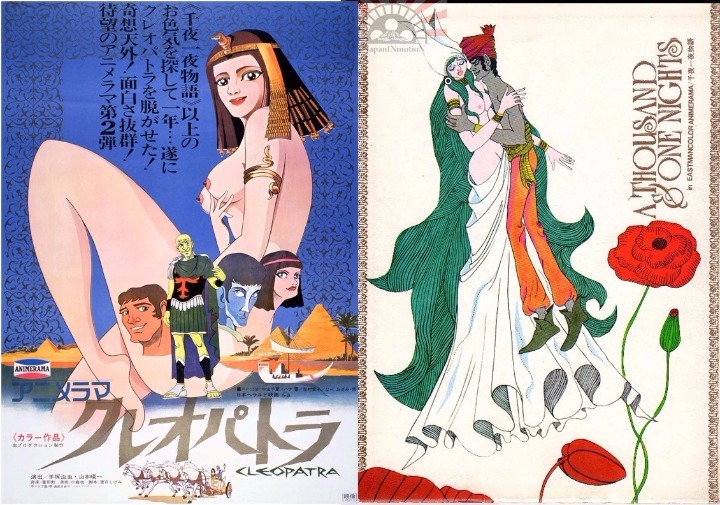
Sample images hentai Ozamu Tezuka created.
Rin: Osamu makes a lot of manga using an art style that catered to children. I was surprised to see this, it felt new to me.
Tapcy: I noticed that the images are created like that of movie posters, where almost all of the key characters are present.
Then, a shift in taste and art style suddenly emerges as new authors created and experimented on new styles and genre. In 1979, the shift of using "somewhat" realistic styles to a more cartoonish or "cute" style was created. This was headed by Azuma Hideo, the person coined as the "Father of Lolicon," creating erotic illustrations of cartoonish characters. "This marked the birth of a genre of pornographic manga that was stimulating despite being, or precisely for being, unrealistic." (Galbraith, 2011)
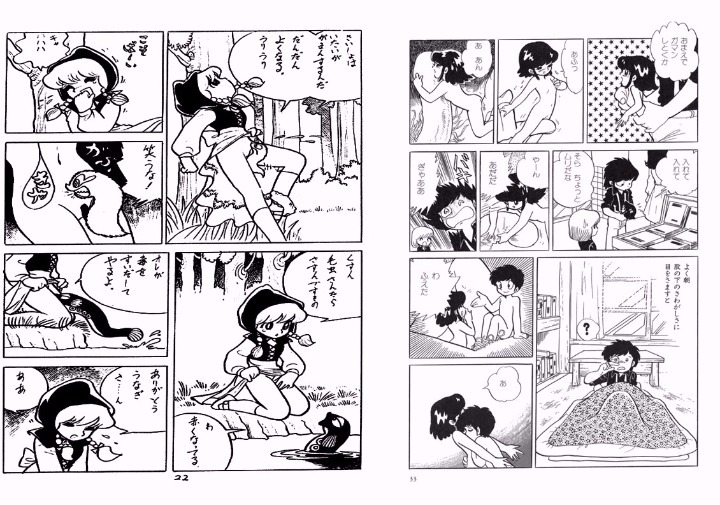
Sample images hentai Azuma Hideo created.
Rin: And here we see a true innovator. Truly a person ahead of his time!
Tapcy: Wow! They look so pure.
The loli genre boomed and manga anthologies were published. Lemon People ran from 1982 to 1998 in Japan. It started with gravure idols on their front page, but quickly switched to manga illustrations. These years were also the time where doujins started to emerge. Doujins of manga and anime titles like Urusei Yatsura and Captain Tsubasa were created.
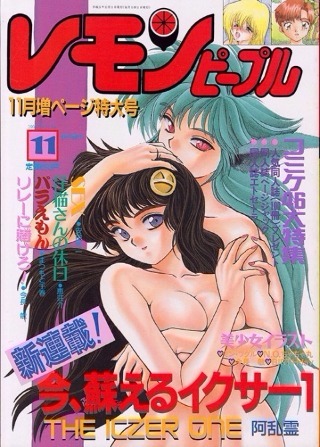
Sample image of the hentai magazine Lemon People.
Rin: The loli-genre boomed, huh...
Tapcy: I feel that the people in these years are experimenting on art a lot, I just feel it.
The hentai manga craze landed on America in the 90's when IANVS Publications released the Anime Shower Special, translating hentai manga and redistributing it for Western audience. Antartic Press soon followed, releasing Bondage Fairies in 1994; an English translation of the hentai manga Insect Hunter.
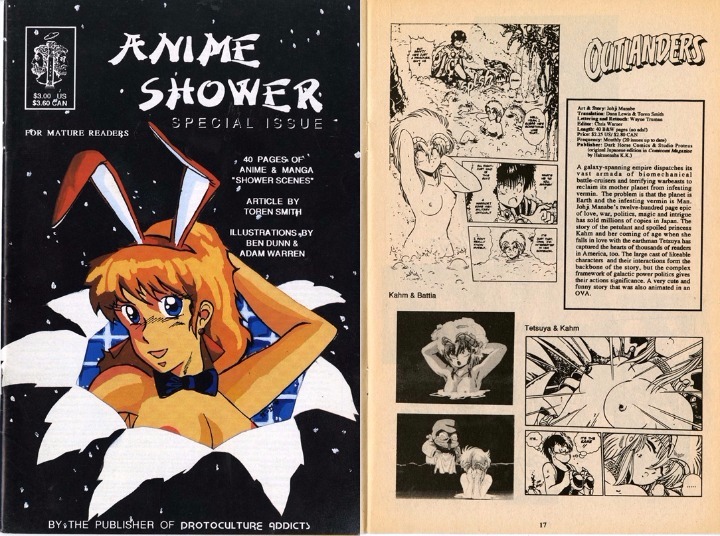
Sample images of the hentai magazine Anime Shower Special.
Rin: This cover reminds me of Heavy Metal for some reasons.
Tapcy: ...and this is why Westerners thinks that Japanese are weird.
The art style used by doujins in the early 2000's doesn't differ much to the style used in manga and anime. By this time, people's acceptance over doujins is less... aggressive. As the techniques used in manga and the styles employed in anime evolved, so too did the art style of doujins.

Sample images of the hentai doujins created in the early 2000's.
Rin: These animes are the ones I grew up with. Seeing them in doujins gave me mixed feelings. Some of those feelings were perverted ones.
Tapcy: The art used are the mainstream art in manga and anime.
The late 2000's - or today, anime and manga had changed a great deal through the help of modern technology. With the change of animation and manga ushered in the change of style in doujins as well. Again, the style of manga and anime of the time reflects the aesthetic style of doujins. With the help of drawing programs and cheaper and more accessible publishing, the doujin industry could be seen as on the rise.

Sample images of the hentai doujins created today.
Rin: The rise of "moe" anime gave birth to a cute and childish looking character. Some even looked borderline loli even when they're not supposed to.
Tapcy: The art of manga and anime today focuses on the face more. It became more "subtle" while center the attention of the audience to the character's facial expressions.
These are the art styles employed by doujin authors over the years. What timeline did you think the art was at its' peak? Did I left something that should have been discussed? Do you have any suggestions and recommendation? Tell us about it in the comments below. Thank you for reading!


